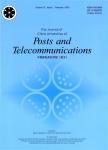版权所有:内蒙古大学图书馆 技术提供:维普资讯• 智图
内蒙古自治区呼和浩特市赛罕区大学西街235号 邮编: 010021

作者机构:Key Laboratory of Universal Wireless Communication Beijing University of Posts and Telecommunications
出 版 物:《The Journal of China Universities of Posts and Telecommunications》 (中国邮电高校学报(英文版))
年 卷 期:2014年第21卷第4期
页 面:68-76页
核心收录:
学科分类:0711[理学-系统科学] 07[理学] 08[工学] 080401[工学-精密仪器及机械] 0804[工学-仪器科学与技术] 080402[工学-测试计量技术及仪器]
基 金:supported by the National Science Foundation of China (61171176)
主 题:CS DWT clustering algorithm
摘 要:Compressed sensing (CS) algorithm enables sampling rates significantly under classical Nyquist rate without sacrificing reconstructed image quality. It is known that, a great number of images have many similar areas which are composed by the same number of grayscale or color. A new CS scheme, namely clustering compressed sensing (CCS), was proposed for image compression, and it introduces clustering algorithm onto framework of CS based on similarity of image blocks. Instead of processing the image as a whole, the image is firstly divided into small blocks, and then the clustering algorithm was proposed to cluster the similar image blocks. Afterwards, the optimal public image block in each category is selected as the representative for transmission. The discrete wavelet transform (DWT) and Gaussian random matrix are applied to each optimal public image block to obtain the random measurements. Different from equal measurements, the proposed scheme adaptively selects the number of measurements based on different sparsity of image blocks. In order to further improve the performance of the CCS algorithm, the unequal-CCS algorithm based on the characteristics of wavelet coefficients was proposed as well. The low frequency coefficients are retained to ensure the quality of reconstructed image, and the high frequency coefficients are compressed by the CCS algorithm. Experiments on images demonstrate good performances of the proposed approach.